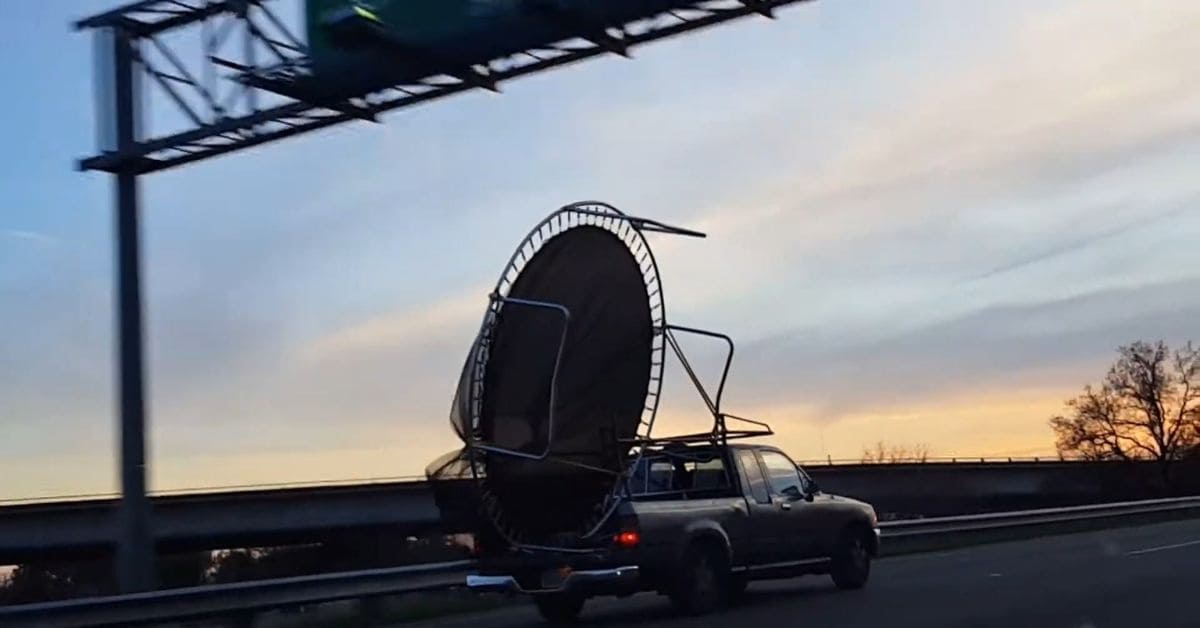Moving a trampoline to a new house can be daunting, especially if you’re unfamiliar with the process. However, you can safely and efficiently transport your trampoline to your new home with the right plan and approach. Whether you’re moving across town or to a new state, there are several things you need to consider when moving a trampoline.
Firstly, you’ll need to disassemble the trampoline properly and pack it securely for transportation. Then, you’ll need to figure out how to transport it to your new home, which may involve renting a truck or hiring a professional moving company.
Finally, you’ll need to reassemble the trampoline at your new location, which can be tricky if you’re unfamiliar with the process. In this article, we’ll cover all the steps involved in moving a trampoline, so you can ensure that your trampoline arrives safely at your new home and can be enjoyed for years to come.
How to move a trampoline to a new house: To move a trampoline to a new house, start by checking the size of the trampoline and gathering the necessary equipment. Disassemble the trampoline, transport it carefully, and reassemble it at the new location. Test it to ensure it is safe to use. Prioritize safety throughout the entire process.
How to move a trampoline to a new house?

Moving a trampoline to a new house involves several steps that need to be taken to ensure a safe and efficient move. Here’s a quick rundown of the process:
- Disassemble the trampoline and pack it properly for transportation.
- Figure out how to transport the trampoline to your new location.
- Reassemble the trampoline at your new location.
By following these steps, you can ensure your trampoline arrives safely at your new home and can be enjoyed for years.
Preparing for the Move
Preparing for the Move: Assessing the Trampoline’s Condition, Choosing the Right Time and Weather Conditions, Gathering Necessary Equipment and Tools, Measuring the Trampoline and the Moving Vehicle
Moving a trampoline can be a daunting task, especially if you have never done it before. However, the process can be smooth and hassle-free with proper preparation and planning.
This section will discuss the key steps to take when preparing for the move, including assessing the trampoline’s condition, choosing the right time and weather conditions, gathering necessary equipment and tools, and measuring the trampoline and the moving vehicle.
Assessing the Trampoline’s Condition
Before you begin moving your trampoline, it is important to assess its condition. Inspect the trampoline for any damage, such as tears in the fabric, broken springs, or bent frames. If you notice any damage, repairing or replacing the affected parts may be necessary before attempting to move the trampoline.
In addition to checking for damage, consider the age and overall condition of the trampoline. Older trampolines may be more difficult to move due to wear and tear, so it is important to consider this when planning your move.
Choosing the Right Time and Weather Conditions
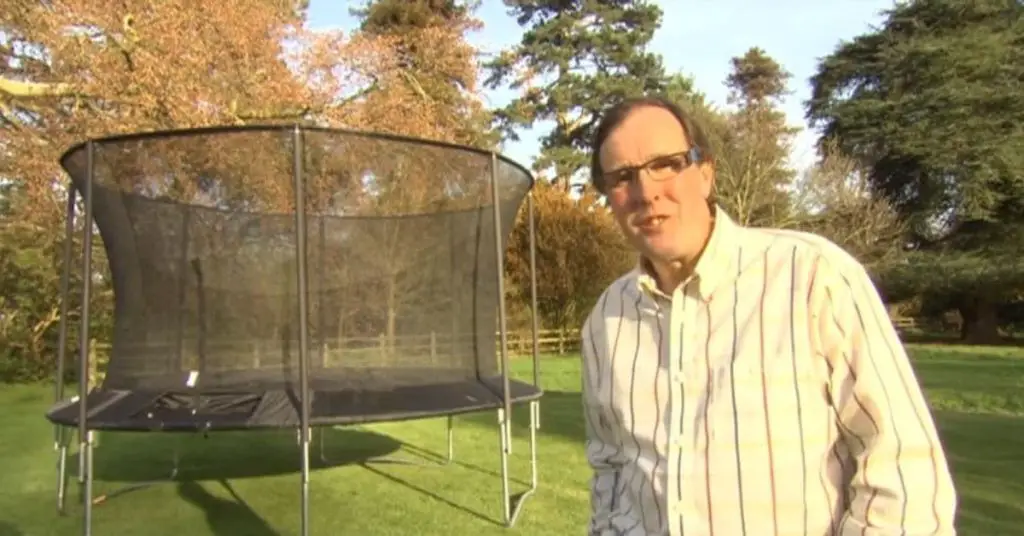
The timing of your trampoline move is important for several reasons. First, you will want to avoid moving the trampoline during peak traffic hours or during rush hour. This will help you avoid traffic jams and delays, which can make the move more stressful and time-consuming.
Second, choosing the right weather conditions for your move is important. Avoid moving the trampoline during rainy or windy conditions, as this can make loading and transporting it safely difficult. Instead, choose a clear, sunny day with mild temperatures to ensure a smooth move.
Gathering Necessary Equipment and Tools
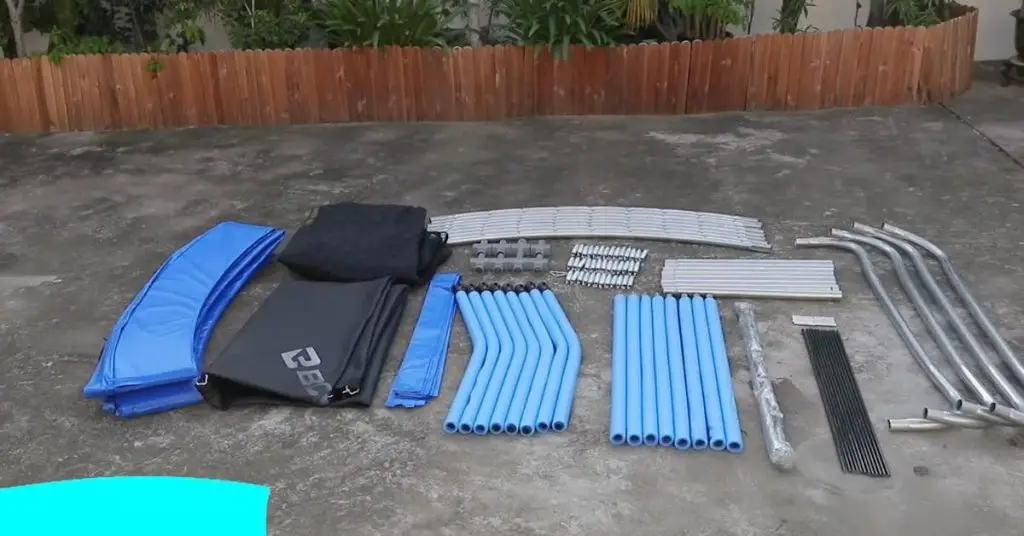
Before you begin the move, gathering all the necessary equipment and tools is important. Depending on the method you choose for moving the trampoline, you may need a trailer, pickup truck, or hand truck/dolly.
You may also need tools such as ratcheting straps, bungee cords, or tie-downs to secure the trampoline during transport.
Ensure you have everything you need before you begin the move, as this will help you avoid delays and ensure a smooth, hassle-free process.
Measuring the Trampoline and the Moving Vehicle
Finally, measuring both the trampoline and the moving vehicle is important to ensure a proper fit. Measure the diameter of the trampoline and the height of the enclosure, if applicable, to ensure that it will fit in the moving vehicle you have chosen.
Similarly, measure the moving vehicle’s width, height, and length to ensure that it is large enough to accommodate the trampoline. This will help you avoid issues such as an oversized trampoline that will not fit in your moving vehicle or a vehicle that is too small to transport the trampoline safely.
Disassembling the Trampoline
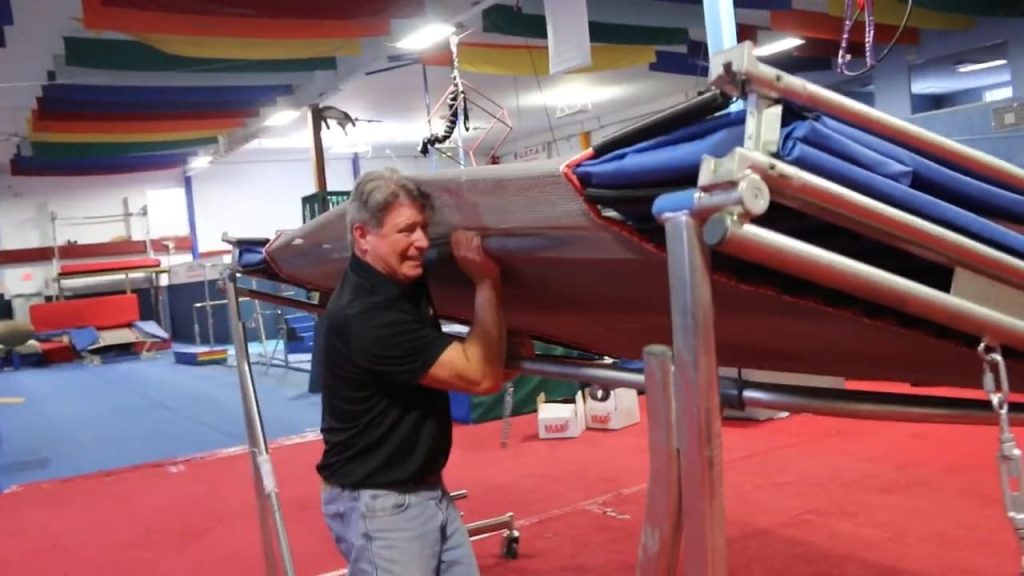
Disassembling the Trampoline: Removing the Safety Enclosure, Removing the Springs and Netting, Disassembling the Frame, Labeling and Organizing Parts
Disassembling a trampoline can be time-consuming, but it is essential if you want to move it safely and efficiently. We will discuss the steps to follow when disassembling a trampoline, including removing the safety enclosure, removing the springs and netting, disassembling the frame, and labeling and organizing parts.
Start by Removing the Safety Enclosure and Netting, if Applicable
The first step in disassembling a trampoline is to remove the safety enclosure and netting, if applicable. This will make it easier to access the springs and mat, and will also help protect the netting and enclosure from damage during transport.
To remove the safety enclosure and netting, remove any straps or clips that hold them in place. Then, carefully remove the netting from the top of the trampoline and set it aside. Next, remove the poles that support the enclosure, and set them aside as well.
Remove the Springs and Netting from the Mat and Fold the Mat in Half
With the safety enclosure and netting removed, the next step is to remove the springs and netting from the mat. To do this, use a spring tool to release each spring from the mat, and then carefully remove the netting from the mat.
Once the netting and springs are removed, fold the mat in half to make it easier to handle during transport. Be sure to keep the mat flat and avoid bending or creasing it, as this can damage the springs and mat and make reassembly more difficult.
Disassemble the Frame of the Trampoline, Starting with the Legs and Then the Main Sections
With the mat and netting removed, the next step is disassembling the trampoline frame. Start by removing the legs of the trampoline, which are usually attached to the main sections of the frame with bolts or screws.
Once the legs are removed, disassemble the main sections of the frame. This may involve removing bolts or screws or simply sliding the sections apart. Be sure to keep all the hardware and parts organized and labeled, making reassembly much easier.
Label and Organize All the Parts for Easy Reassembly
Finally, it is important to label and organize all the trampoline parts for easy reassembly. This may involve using small plastic bags or containers to keep the hardware and parts organized and labeling them with a marker or label maker.
Be sure to keep all the parts and hardware together and label them clearly so that you can easily identify them during reassembly. This will help ensure a smooth and efficient reassembly process and will also help minimize the risk of losing or misplacing any important parts.
Methods for Moving a Trampoline
Moving a trampoline can be challenging, but with the right equipment and technique, it can be done safely and efficiently. There are several methods for moving a trampoline, each with its advantages and disadvantages. This section will discuss three common methods for moving a trampoline.
Using a Trailer
Using a trailer is one of the most common methods for moving a trampoline. This method requires a trailer that is large enough to accommodate the trampoline. When selecting a trailer, it is important to choose the right size to ensure that the trampoline fits securely and does not move during transportation.
To load the trampoline onto the trailer, start by disassembling the trampoline according to the manufacturer’s instructions. Once the trampoline is disassembled, move the pieces to the trailer and load them onto it. Start by loading the trampoline frame, followed by the springs, mat, and other accessories.
When securing the trampoline onto the trailer, use straps or bungee cords to ensure it does not move during transportation. It is important to secure the trampoline tightly, but not so tightly, that it becomes damaged during transit. Once the trampoline is secured, transport it to the new location.
Using a Pickup Truck
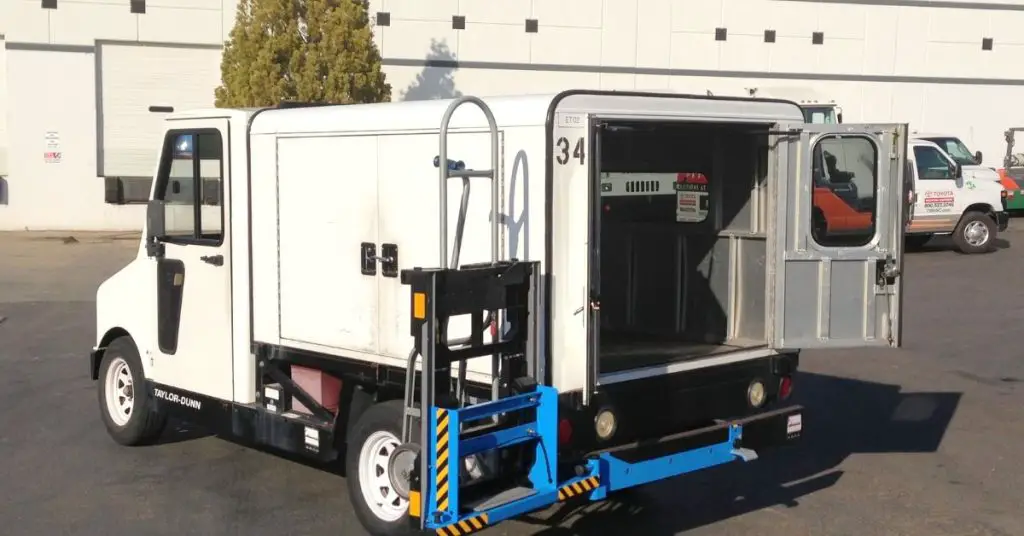
Using a pickup truck is another common method for moving a trampoline. This method is best for smaller trampolines and requires a pickup truck with a large enough bed to accommodate the trampoline.
To prepare the pickup truck for transportation, remove any loose items from the bed and ensure it is clean and dry. Once the bed is ready, disassemble the trampoline and load it onto the truck. Start by loading the trampoline frame, followed by the mat, springs, and other accessories.
When securing the trampoline onto the truck, use straps or bungee cords to ensure it does not move during transportation. It is important to secure the trampoline tightly, but not so tightly, that it becomes damaged during transit. Once the trampoline is secured, transport it to the new location.
Using a Dolly or Hand Truck
Using a dolly or hand truck is a method for moving a smaller trampoline short distances. This method is best for trampolines that are too small for a trailer or pickup truck.
To choose the right type of dolly or hand truck, consider the weight and size of the trampoline. Make sure the dolly or hand truck is capable of supporting the weight of the trampoline and is large enough to accommodate it.
To load the trampoline onto the dolly or hand truck, start by disassembling the trampoline and moving the pieces to the dolly or hand truck. Once the trampoline is loaded onto the dolly or hand truck, secure it with straps or bungee cords to ensure that it does not move during transportation.
When transporting the trampoline, push the dolly or hand truck slowly and steadily to avoid damaging the trampoline or injuring yourself. Once you reach the new location, carefully unload the trampoline and reassemble it according to the manufacturer’s instructions.
Using Professional Movers
Using a professional moving company can be an excellent option for moving a trampoline. Here are some steps to consider:
Hiring a reputable moving company: Look for a company with experience in moving trampolines and positive reviews.
Preparing the trampoline for professional movers: Disassemble the trampoline according to the manufacturer’s instructions and label the parts for easy reassembly.
Transporting the trampoline safely: Once the movers arrive, they will carefully load and secure it onto their truck. They will use straps and padding to ensure the trampoline stays in place during transport. With professional movers, you can trust that your trampoline will be transported safely to your new home.
How to Move a Springfree Trampoline?

Moving a Springfree trampoline can be challenging due to its size and weight, but it can be done with proper preparation and care. Here are the steps to move a Springfree trampoline:
- Gather a team: Enlist the help of a few people to assist you in moving the trampoline. It’s important to have enough people to ensure a safe and smooth relocation.
- Disassemble the trampoline: Start by removing the net enclosure and any other accessories or components attached to the trampoline. Follow the manufacturer’s instructions for disassembly, which may involve removing the mat, rods, and springs.
- Protect the trampoline: Use padding or blankets to cover the frame and mat to prevent any damage during transportation.
- Lift and carry: Lift the frame of the trampoline together with your team, making sure to distribute the weight evenly. Avoid dragging the trampoline as it can damage the frame or mat.
- Transport carefully: Use a suitable vehicle to transport the trampoline to its new location. Secure it tightly to prevent any movement during transportation.
- Reassemble at the new location: Once you’ve reached the desired spot, follow the manufacturer’s instructions to reassemble the trampoline. Start with the frame, then correctly attach the springs, mat, and other components.
- Ensure proper placement: Place the trampoline on a flat and level surface, away from any hazards such as trees, fences, or power lines. Make sure there is enough clearance around the trampoline for safe jumping.
Remember to consult the Springfree trampoline’s user manual or contact the manufacturer for specific instructions on disassembly and reassembly.
Reassembling the Trampoline
After safely transporting your trampoline to its new location, it’s time to reassemble it. Follow these steps to ensure a safe and successful reassembly:
Identify the parts: Before beginning reassembly, take inventory of all the parts and ensure that everything is accounted for. Double-check that all the nuts, bolts, and screws are in good condition and properly labeled.
Start with the legs: Begin by assembling the legs and attaching them to the frame. Use a rubber mallet to secure them in place.
Add the frame sections: Connect the main frame sections once the legs are attached. Ensure they’re level and secure and that all the joints and connections are properly aligned.
Attach the springs: Attach the springs to the frame and the mat. It’s important to use the correct number of springs and ensure they’re properly tensioned.
Install the mat and netting: Carefully unfold it and attach it to the springs. If your trampoline has netting or a safety enclosure, attach it next.
Stability test: After reassembly, give the trampoline a good shake to ensure it’s stable and secure. Check all the connections and joints to ensure everything is properly tightened.
Tips for Ensuring Safety and Stability:
Follow the manufacturer’s instructions: Always refer to the instructions when reassembling your trampoline. These instructions will provide specific guidance on the proper assembly process.
Check for wear and tear: Inspect all parts for wear and tear before reassembling. If any parts are damaged or worn, replace them before use.
Use the right tools: Ensure that you have all the necessary tools and equipment to reassemble the trampoline properly. This includes a rubber mallet, wrenches, and pliers.
Keep children away: Keep children away from the trampoline during reassembly. This will ensure they don’t get injured and won’t interfere with the reassembly process.
Level the ground: Before reassembling the trampoline, ensure that the ground is level. A level surface will prevent the trampoline from tipping over and causing injuries.
By following these steps and tips, you can safely and successfully reassemble your trampoline and enjoy it for years.
Safety Precautions
Regarding moving and reassembling a trampoline, safety should always be a top priority. Here are some important safety precautions to keep in mind:
Wear Protective Gear: Before you start disassembling or reassembling the trampoline, wear appropriate protective gear. This should include sturdy work gloves, closed-toe shoes, and safety glasses.
Secure the Trampoline: When moving the trampoline, make sure it is properly secured and stable. If you’re using a trailer, truck, or dolly, ensure the trampoline is securely fastened and won’t shift during transport. If you’re reassembling the trampoline, ensure it is properly anchored to the ground to prevent it from tipping over.
Use the Right Tools: Using the wrong tools to move or reassemble the trampoline can damage the trampoline or injury to yourself. Ensure you have the right tools, such as pliers, wrenches, and screwdrivers.
Follow the Manufacturer’s Instructions: Make sure to follow the manufacturer’s instructions carefully when disassembling and reassembling the trampoline. This will help ensure that all parts are properly installed and secured.
Check for Damage: Inspect all parts for damage or wear and tear before reassembling the trampoline. Replace any damaged parts before continuing with the reassembly process.
Supervise Children: Children should always be supervised when using the trampoline. Make sure they understand the safety rules and use the trampoline properly. Only one person should be on the trampoline and flips and other dangerous maneuvers should be avoided.
Regular Maintenance: Regularly inspect your trampoline for damage and wear and tear. Make sure all bolts, nuts, and springs are tight and secure. Replace any damaged or worn parts promptly.
Following these safety precautions can help prevent injuries and ensure a safe and successful trampoline move or reassembly. Always take your time and be cautious; if you’re unsure about any part of the process, consult a professional.
FAQs:
Q.1 Can I move a trampoline without taking it apart?
Yes, you can move a trampoline without taking it apart, but it depends on your chosen method. You can use a trailer, pickup truck, dolly, or hand truck to move the trampoline without dismantling it.
Q.2 How do I prepare my trampoline for moving?
You need to assess the trampoline’s condition, choose the right time and weather conditions, gather necessary equipment and tools, and measure the trampoline and the moving vehicle before moving it. You must also disassemble the trampoline if you plan to move it in parts.
Q.3 What is the best way to move a trampoline?
The best way to move a trampoline is by using a trailer or a pickup truck if you have one. You can also use a dolly or hand truck if you don’t have access to a trailer or a pickup truck. Alternatively, you can hire professional movers to help you move the trampoline safely and efficiently.
Q.4 How do I secure the trampoline during transportation?
To secure the trampoline during transportation, you need to ensure that it is properly disassembled and packed to prevent it from shifting or moving around during transportation. You should also use straps or bungee cords to secure the trampoline to the trailer, truck, or dolly.
Q.5 How do I reassemble the trampoline?
To reassemble the trampoline, you need to follow the manufacturer’s instructions carefully. You also need to ensure that all the parts are properly labeled and organized to make the reassembly process easier. Once you have assembled the trampoline, check it for stability and safety before using it again.
Conclusion:
In conclusion, moving a trampoline to a new house requires careful planning, preparation, and execution. By following the easy steps outlined in this guide, you can ensure that your trampoline arrives safely and securely at your new location.
Before you start the move, it’s important to assess the trampoline’s condition, choose the right time and weather conditions, and gather all necessary equipment and tools. Disassembling the trampoline is a crucial step that requires attention to detail and organization.
Proper labeling and organization of all the parts will make it easier to reassemble the trampoline at your new location. There are several methods for moving a trampoline, including using a trailer, a pickup truck, a dolly, or professional movers.
When reassembling the trampoline, it’s important to follow the instructions carefully and take safety precautions to ensure stability.By following these tips and tricks, you can ensure a successful move for your trampoline and continue to enjoy it for years to come.
We hope this guide on how to move a trampoline to a new house has helped you understand the process better. If you have any questions, please feel free to ask in the comments section below!

